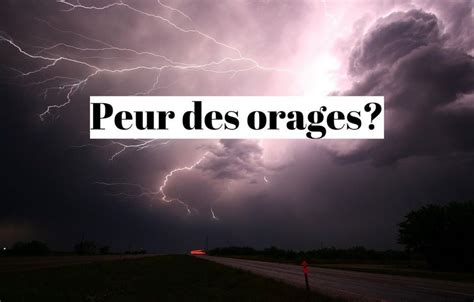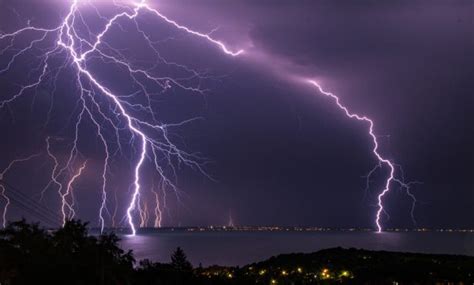phobie de l orage ,Comment surmonter la peur de l’orage ,phobie de l orage,Avoir peur de l’orage, une crainte qui ne date pas d’hier et qui s’explique facilement. La peur de l’orage n’est pas une fatalité. Saviez-vous que votre phobie comportementale en dit long sur .
With the Big Pilot’s Watch Top Gun Edition “Mojave Desert”, IWC presents the Big Pilot's Watch in a sand-coloured ceramic case for the first time. The striking colour is inspired by Navy pilots' .

The fear of thunderstorms, known as astraphobia, is more common than many might realize. It can manifest in various ways, ranging from mild anxiety to a debilitating terror that affects daily life. This article will explore the different facets of this phobia, including its psychological roots, common symptoms, and practical methods for overcoming it. The focus will be on cognitive distraction techniques, as a means of shifting attention away from the storm and engaging in positive activities.
1. What Is Astraphobia?
Astraphobia, often interchangeably referred to as the fear of thunder and lightning, is a specific type of phobia that falls under the broader category of brontophobia (the fear of thunderstorms in general). This fear can be triggered by a variety of elements associated with storms, including thunderclaps, lightning flashes, or even the dark clouds that precede a storm. Individuals with astraphobia may experience panic attacks, a racing heart, trembling, sweating, or a general sense of dread at the first sign of a storm.
Interestingly, while brontophobia refers to the fear of the entire storm (both thunder and lightning), astraphobia is typically used to denote a fear that is more focused on the thunder or the lightning itself. The intensity and the emotional response to this fear can vary, but for many, the terror can be overwhelming.
2. The Psychological Basis: Why Are We Afraid of Storms?
The roots of astraphobia are not always immediately obvious, but several psychological factors contribute to the development of this phobia.
- Traumatic Experiences: Often, a person may have experienced a particularly frightening or traumatic event related to a storm in their past. This could be anything from being caught in a violent storm to hearing a storm while in a vulnerable position. The brain tends to associate the fear with the event, and over time, this fear is generalized to any similar circumstances (such as hearing thunder or seeing lightning).
- Genetic Predisposition: Some individuals are more prone to developing phobias due to genetic factors. If there is a history of anxiety or other phobias in the family, there may be a higher chance of developing an irrational fear of storms.
- Environmental Influence: Children, in particular, may develop fears through observation or parental reinforcement. For example, if a parent is visibly anxious or scared during a storm, a child may internalize this fear and adopt similar responses.
- Evolutionary Factors: Some psychologists suggest that the fear of loud noises and sudden movements may be deeply rooted in our evolutionary survival mechanisms. Early humans who responded with fear to loud, unpredictable events like storms may have been more likely to survive by seeking shelter or avoiding danger. Though today we may not face the same immediate threats, this primal fear remains in many individuals.
3. Symptoms of Phobie de l’Orage: How to Recognize It
While the physical symptoms of astraphobia can vary, common signs include:
- Physical Manifestations: These may include shaking, sweating, rapid heartbeat, shortness of breath, dizziness, or even nausea. These symptoms can be similar to those of a panic attack and can feel overwhelming in the heat of the moment.
- Avoidance Behavior: People with this phobia may go to great lengths to avoid being outside or exposed to storms. They may avoid certain areas of their home where they feel more vulnerable or try to take shelter when a storm is predicted. In severe cases, this avoidance can interfere with daily activities.
- Excessive Worrying: Leading up to a storm, people with astraphobia may experience a sense of dread or anxiety. This can include constant checking of weather reports or obsessively listening for signs of impending storms.
- Cognitive Distortions: Individuals may convince themselves that a storm will cause disaster or that they are in immediate danger. This type of catastrophic thinking exacerbates the fear and can lead to hypervigilance.
4. Distraction Cognitive: Shifting Focus to Positive Activities
One of the most effective ways to combat the fear of storms is through cognitive distraction. This strategy involves shifting the focus away from the storm itself and directing attention to more pleasant or neutral activities. The idea is to interrupt the cycle of anxiety and replace it with a more positive and calming activity.
Here are a few ways to practice cognitive distraction during a storm:

phobie de l orage Pilot's Watch Double Chronograph Edition Top Gun Ceramic Case, Automatic winding, Diameter 46.0 mm.The 89000-calibre family includes powerful chronograph movements with flyback function, which are used, for example, for the big digital date and month displays. Optimized for navigational .
phobie de l orage - Comment surmonter la peur de l’orage